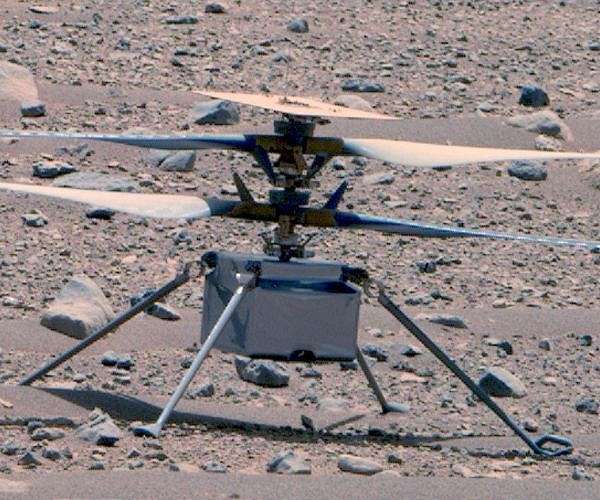25.01.2024

File image of NASA's Ingenuity Mars Helicopter on the surface of Mars/
NASA's Ingenuity Mars helicopter, which made history by achieving the first powered flight on another world, has officially ended its nearly three-year mission after sustaining rotor damage during its last outing, the space agency said Thursday.
The tissue-box sized aircraft, which hitched a ride to the Red Planet under the belly of the Perseverance rover, first lifted off the surface on April 19, 2021.
Originally intended only to prove flight was possible in the ultra-thin Martian atmosphere through five test runs, Ingenuity went on to be deployed a total of 72 times, logging more than two hours of flight time in short hops.
Its mission evolved to act as an aerial scout to assist its wheeled companion in searching for signs of ancient microbial life from billions of years ago when Mars was much wetter and warmer than today.
Ingenuity's longevity surpassed all expectations, defying challenges including dust storms, treacherous terrain, a dead sensor and frigid conditions.
Designed to operate in springtime, its solar-powered heating system was unable to remain on throughout the night in winter, which led to the flight computer freezing over and forced engineers to devise new protocols.
"It is bittersweet that I must announce that Ingenuity, the little helicopter that could... has now taken its last flight on Mars," said NASA administrator Bill Nelson in a video message.
"Like the Wright brothers, what they did back here on Earth at the early part of the last century, Ingenuity has paved the way for future flight in our solar system, and it's leading the way for smarter, safer human missions to Mars and beyond."
- Crash landing -
While the helicopter, which weighs four pounds (around two kilograms), remains upright and in communication with mission control, images from its last flight on January 18 indicate "one or more" of its rotor blades sustained damage during landing, meaning it is no longer capable of flight.
NASA unexpectedly lost and then reestablished contact following the final flight, though the relief for space enthusiasts turned out to be short-lived.
Data showed that the helicopter achieved its planned maximum altitude of 40 feet (12 meters) and hovered there for 4.5 seconds.
But the temporary blackout occurred just as it was on its way down to land, around three feet above the surface.
"Imagery revealing damage to the rotor blade arrived several days later. The cause of the communications dropout and the helicopter's orientation at time of touchdown are still being investigated," the statement said.
Ingenuity's legacy is set to live on in Dragonfly, a car-sized, nuclear-powered rotorcraft NASA is planning to send to the surface of Titan, Saturn's largest moon, in 2028.
Quelle: SD
